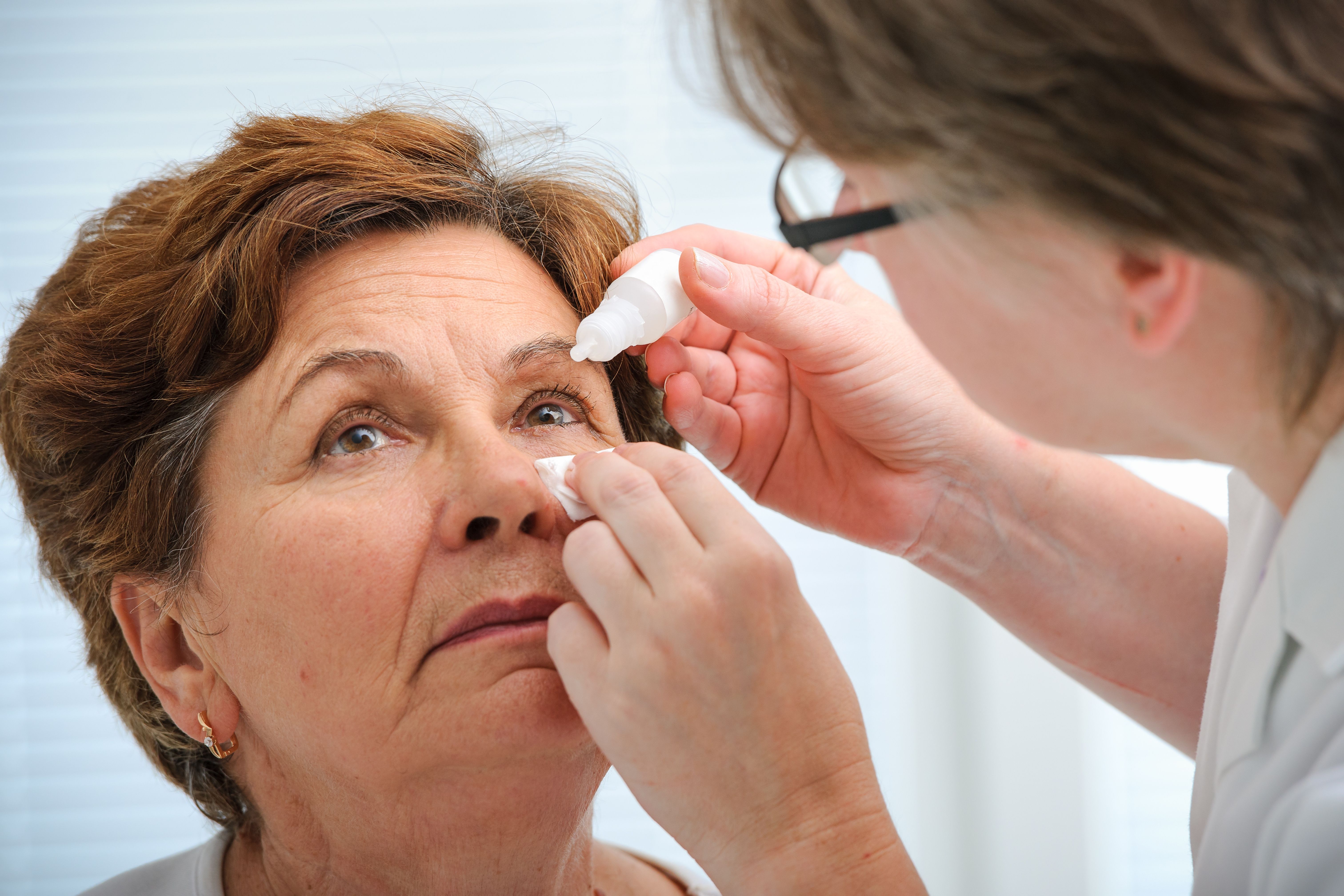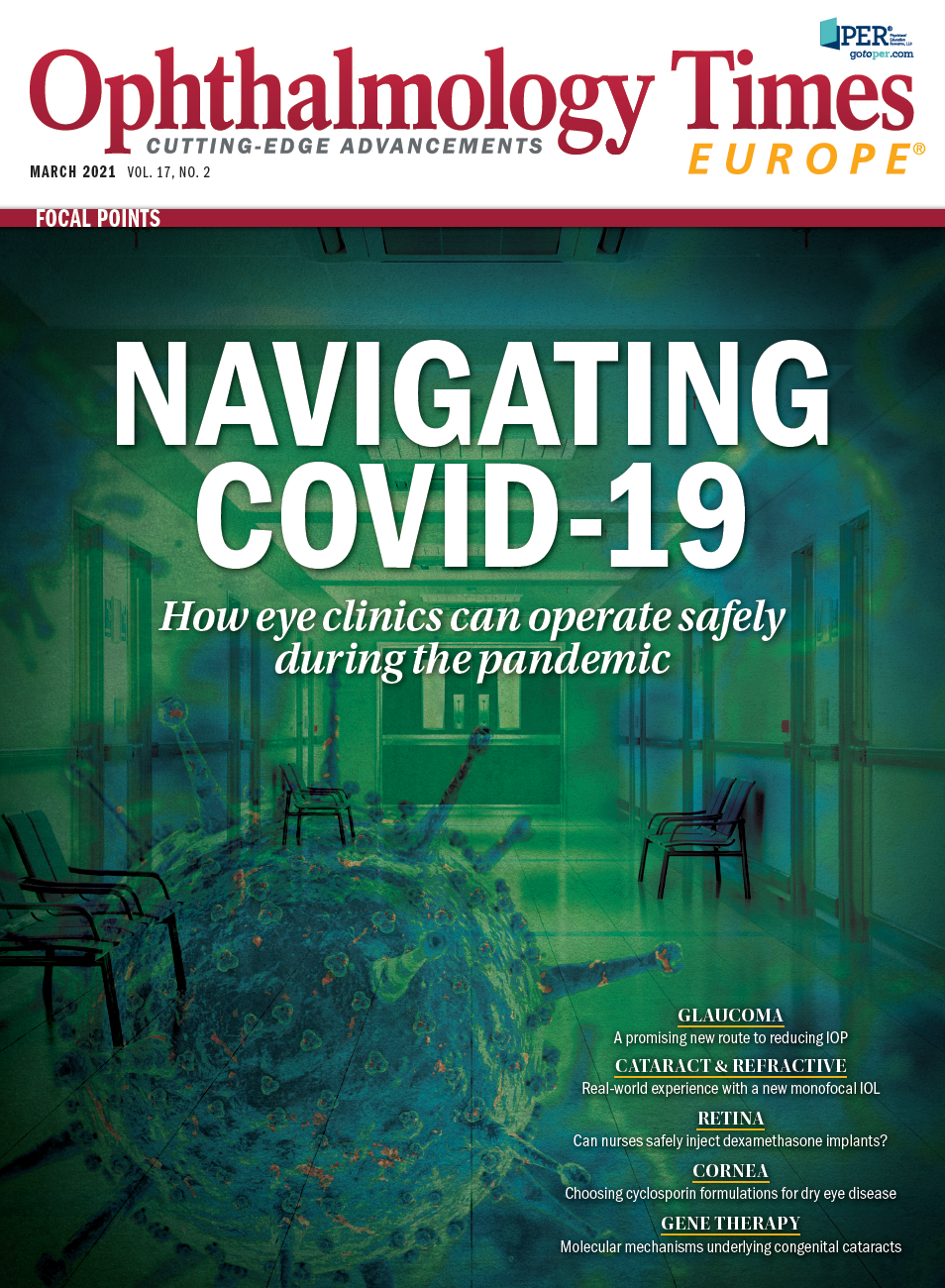A new route to reducing IOP
To date, the suprachoroidal space has not been a feasible route to reduce intraocular pressure in glaucoma. A new device promises to change that.

Minimally invasive surgeries (MIGS) have become popular in recent years. Nevertheless, current technologies have some drawbacks: Schlemm’s-canal-based operations are limited by a modest intraocular pressure (IOP) reduction and the impossibility of predicting the level of IOP reduction in a particular patient, while subconjunctival MIGS share with trabeculectomy the need for bleb management and all its drawbacks.
The suprachoroidal space has significant potential, but all previous efforts to exploit this area for reducing IOP have been unsuccessful. Is there any hope for the future or should this pathway be abandoned?
Why suprachoroidal?
The uveoscleral outflow pathway, first described by Anders Bill in 1965,1 is driven by the negative pressure gradient present in the suprachoroidal space. Traumatic disinsertion of the ciliary body results in IOP reduction.
The suprachoroidal space has been explored as a target for glaucoma surgery for over a century, from the initial simple creation of a cyclodialysis with a spatula to the use of different materials to keep the path from the anterior chamber to the suprachoroidal space open.
Suprachoroidal filtration has several potential advantages: unlike the trabecular outflow it does not depend on episcleral venous pressure; it can be easily accessed via an ab interno approach; it produces a significant IOP drop; and the surgical technique needed to access this space has a very short learning curve. Nevertheless, all efforts to use this route have proven unsuccessful.
Recent experience with the CyPass (Alcon) device led to its removal from the market because of endothelial cell damage.2 A second problem is the potential sudden closure of the fluid channel due to fibrosis, which results in a marked increase in IOP.
New procedure
iSTAR Medical is pioneering a new product called Miniject that addresses some of the drawbacks of previous devices. The surgical procedure is ab interno, which allows for sparing of the conjunctiva and the sclera for further surgery if needed.
The material used is soft and flexible and protrudes only minimally into the anterior chamber; these characteristics are intended to minimise endothelial cell damage.3 The material is made of hollow silicone spheres, providing a high degree of biocompatibility and bio-integration.
Studies of up to 26 weeks on rabbits4 demonstrated that the material is colonised by host cells, a process that minimises fibrotic encapsulation around the device. These healthy cells do not prevent aqueous humour drainage but rather minimise the occurrence of long-term IOP spikes due to fibrosis.
All these observations are essential because a possible reason why previous attempts to utilise the suprachoroidal space as a viable surgical alternative in the treatment of glaucoma may have failed is that the devices were made of unsuitable materials.
Trial data
To date, approximately 130 patients have been implanted with the device in different stand-alone trials.5 In pooled data from the STAR-I6 and STAR-II7 trials, mean postoperative pressure at 6 months was 14.5 mmHg on an average of 0.7 IOP-lowering medications with an IOP reduction of 40%, which is quite impressive compared with other technologies, especially considering that we are talking about stand-alone procedures.
Results at 24 months in the STAR-I trial showed a sustained IOP reduction of 41% to a mean of 13.8 mmHg on an average of one medication.8 Furthermore, pooled data across all trials of the device show that secondary glaucoma surgery occurred at a low rate of 5%.5
Hypotony (<6 mmHg) was present in a low number of patients (1% in STAR-I, II, III trials), and transient. Transient hyphemia occurred in 11% of patients across all the trials, which may be linked to the first-generation dual-operator delivery injector that has since been replaced by a single-operator delivery tool. Rates of hyphema are particularly relevant in procedures undertaken in combination with cataract surgery, due to the high visual expectations of patients.
Long-term reduction in mean visual acuity reduction (≥2 lines) was experienced by up to 11% of pooled patients and was mainly due to cataract progression. Little can be said at present regarding endothelial cell density (ECD) loss because longer follow-up is necessary. However, only a 5% mean corneal ECD loss has been reported with the device over 24 months, and no patient manifested a decrease ≥30%.
The delivery system has been improved over the years: it started as a two-operator procedure but now has a much more user-friendly inserter using a wheel for implantation and requiring only one operator. The width of the delivery device, nevertheless, requires some improvements in order to avoid unnecessarily wide clefts. A significant clinical study and further recent product development have evaluated the best sheath curvature and tip sharpness to enable effective penetration into the supra-choroidal space.
---
Antonio Maria Fea, MD, PhD
E: antoniomfea@gmail.com
Dr Fea is an aggregate professor at the University of Torino, Italy, and an attached scientist at SERI. In recent years he has been involved in the development and clinical evaluation of several minimally invasive techniques for the treatment of glaucoma. Dr Fea is a consultant for iSTAR, Glaukos, Ivantis, Lasersight and EyeD and has received contributions for research or presentations from Allergan.
References
- Bill A. The aqueous humor drainage mechanism in the cynomolgus monkey (Macaca irus) with evidence for unconventional routes. Invest Ophthalmol. 1965;4:911-919.
- https://www.alcon.com/media-release/alcon-announces-voluntary-global-market-withdrawal-cypass-micro-stent-surgical[press release]. 2018.
- Lass JH, Benetz BA, He J, et al. Corneal endothelial cell loss and morphometric changes 5 years after phacoemulsification with or without CyPass micro-stent. Am J Ophthalmol. 2019;208:211-218.
- Grierson I, Minckler D, Rippy MK, et al. A novel suprachoroidal microinvasive glaucoma implant: in vivo biocompatibility and biointegration. BMC Biomed Eng. 2020;2:10.
- iSTAR Medical press release, 29 September 2020. https://www.istarmed.com/2020/09/29/positive-outcomes-for-istar-medicals-migs-miniject-shown-in-trials-of-over-130-glaucoma-patients/
- Denis P, Hirneiß C, Reddy KP, et al. A first-in-human study of the efficacy and safety of MINIject in patients with medically uncontrolled open-angle glaucoma (STAR-I). Ophthalmol Glaucoma. 2019;2:290-297.
- García Feijoó J, Denis P, Hirneiß C, et al. A European study of the performance and safety of MINIject in patients with medically uncontrolled open-angle glaucoma (STAR-II). J Glaucoma. 2020;29:864-871.
- Denis P, Hirneiß C, Durr GM, et al. Two-year outcomes of the MINIject drainage system for uncontrolled glaucoma from the STAR-I first-in-human trial. Br J Ophthalmol. Published Online First: 3 October 2020.

